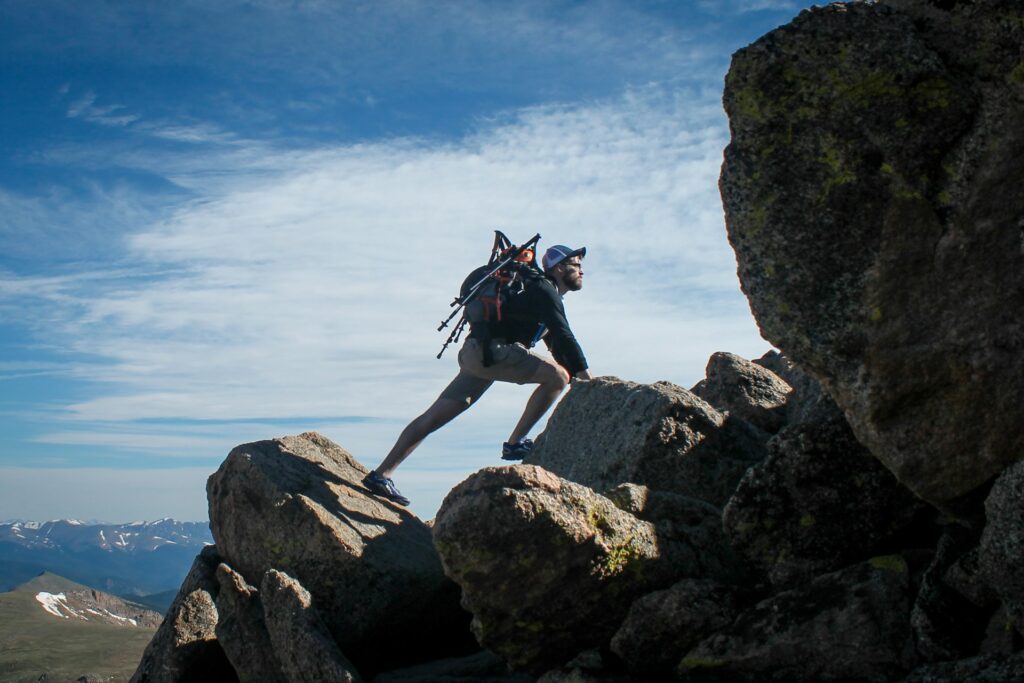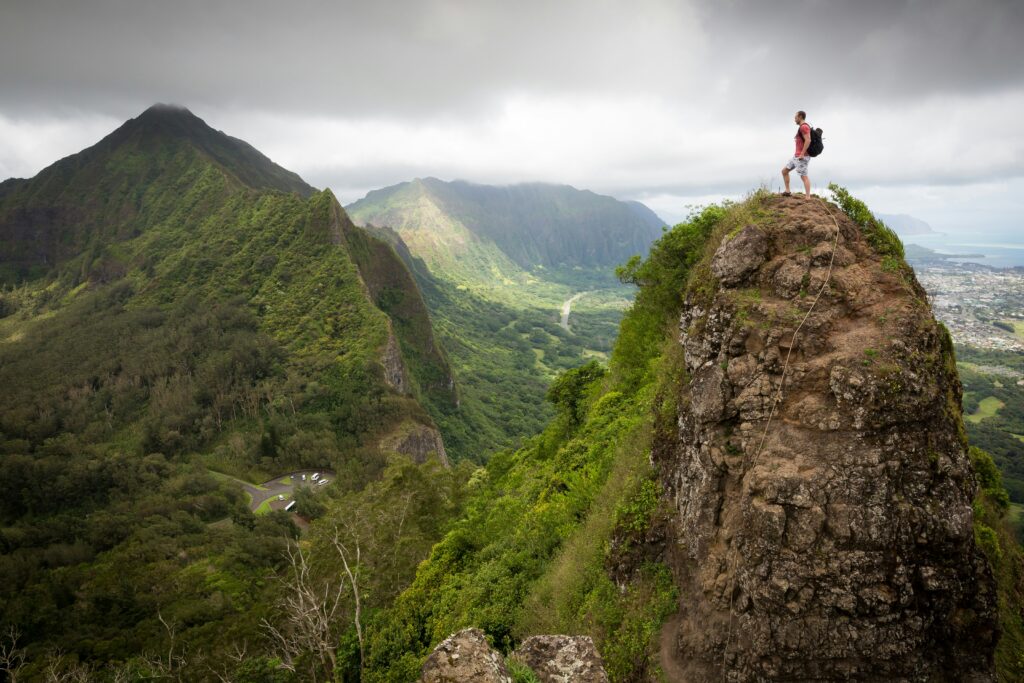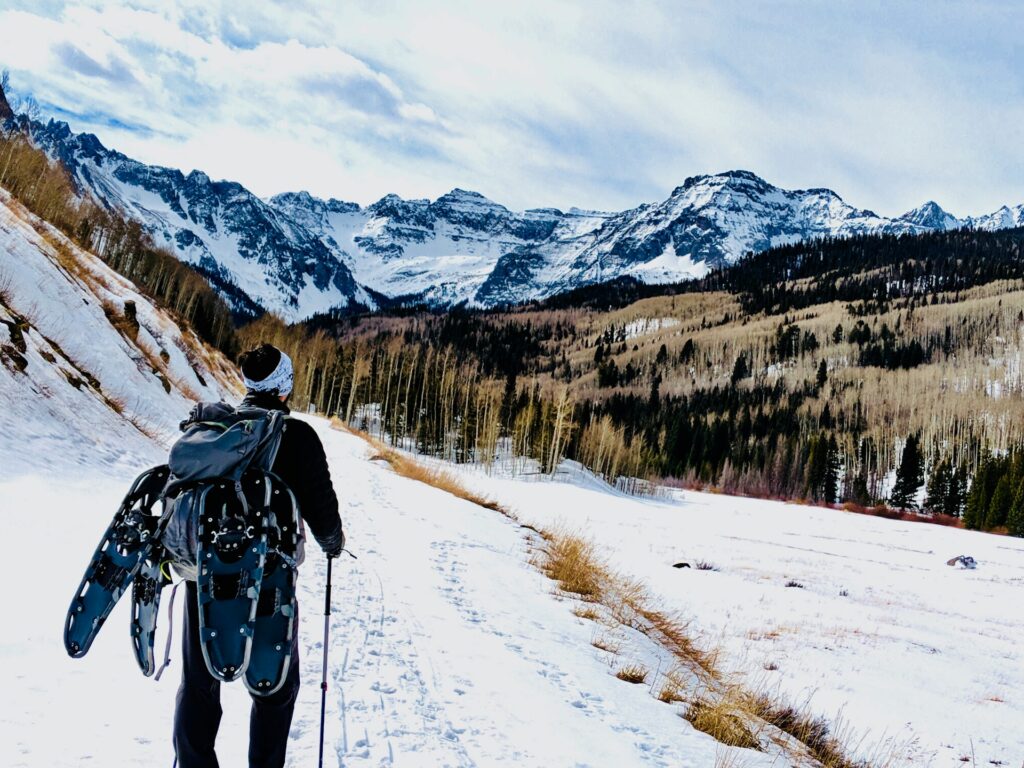In our fast-paced world filled with digital distractions and constant connectivity, finding peace of mind has become increasingly challenging. Mindful hiking—the practice of combining physical outdoor activity with present-moment awareness—offers a powerful antidote to modern stress. This unique blend of exercise, nature immersion, and mindfulness creates the perfect environment for mental restoration.
Research consistently shows that time spent in natural settings while engaging in purposeful movement can significantly reduce anxiety, improve mood, and enhance overall well-being. Whether you’re an experienced hiker or someone looking to begin this transformative practice, these thirteen mindful hiking tips will help you maximize the mental health benefits of your outdoor adventures.
1. Prepare Mindfully Before Your Hike

Mental preparation begins before you set foot on the trail. Take time the evening before or morning of your hike to set an intention for your experience. This might be as simple as “I will notice something new” or “I will practice gratitude with each step.” Pack thoughtfully, bringing only what you need to avoid being weighed down physically and mentally by excess.
Check weather conditions and trail maps in advance to eliminate anxiety about the unknown. Lastly, consider leaving your technological devices behind or at least switching them to airplane mode—this deliberate disconnection creates space for deeper connection with yourself and nature.
2. Begin With a Mindful Moment

When you arrive at the trailhead, resist the urge to immediately start walking. Instead, take a few moments to center yourself and transition mindfully into your hiking experience. Stand still, close your eyes, and take five deep breaths, feeling the air fill and leave your lungs completely. Notice the temperature on your skin, the sounds around you, and the ground beneath your feet.
This simple ritual creates a clear boundary between your regular life and this special time you’ve dedicated to yourself. Many experienced mindful hikers find that this initial grounding practice significantly enhances their entire hiking experience, allowing them to leave behind mental clutter before taking their first step.
3. Practice Sensory Awareness While Hiking

As you move along the trail, intentionally engage all five senses to anchor yourself in the present moment. Notice the varied textures of tree bark, rocks, and plants if you touch them. Listen for distant and nearby sounds—birdsong, rustling leaves, flowing water, or your own breathing and footsteps. Observe the quality of light filtering through trees or the patterns of clouds overhead.
Breathe in deeply through your nose, noticing the earthy scents of soil, pine, flowers, or rain. If appropriate and safe, taste wild berries or fresh mountain water (ensuring you know what’s safe first). This full sensory engagement interrupts rumination and worrying by gently bringing your attention back to the immediate experience.
4. Focus on Your Breathing Patterns

Your breath serves as a portable meditation tool that’s always available during your hike. As you tackle more challenging sections of trail, notice how your breathing naturally changes, becoming deeper and more rhythmic. Try synchronizing your breath with your footsteps—perhaps inhaling for three steps and exhaling for three steps—creating a walking meditation that calms your nervous system.
When you reach viewpoints or rest areas, take the opportunity to practice a few minutes of deeper breathing exercises. Research shows that conscious breathing reduces cortisol levels and activates the parasympathetic nervous system, countering the effects of chronic stress that many of us carry from our daily lives.
5. Adopt Mindful Walking Techniques

Transform ordinary hiking into a moving meditation by bringing full awareness to the mechanics of walking itself. Notice the sensation of your foot as it lifts, moves forward, and makes contact with the ground again. Feel the transfer of weight from heel to toe and the subtle adjustments your body makes to maintain balance on uneven terrain.
Observe how your arms swing naturally to counterbalance your leg movements. This detailed attention to walking serves as an excellent mindfulness anchor when your thoughts begin to wander. Many practitioners report that this technique not only enhances mental clarity but also improves physical coordination and reduces the risk of falls or injuries on the trail.
6. Embrace Solitude When Possible

While hiking with companions can be joyful, consider occasionally hiking alone (in safe conditions) to deepen your mindfulness practice. Solitude eliminates the social pressure to maintain conversation and allows you to fully immerse in your personal experience. Use this time to notice your internal dialogue without judgment, perhaps observing how thoughts arise and pass like clouds in the sky.
Solo hiking creates space for insights and realizations that might remain buried in the business of daily life or constant social interaction. If safety concerns make solo hiking impractical, consider arranging periods of silence with your hiking companions, where everyone agrees to walk quietly for a predetermined time.
7. Practice Gratitude Throughout Your Journey

The natural world offers countless opportunities to cultivate appreciation and wonder. As you hike, intentionally note specific elements that spark gratitude—perhaps the strength of your legs carrying you uphill, the clean air filling your lungs, or the privilege of time spent in nature.
When you encounter particularly beautiful vistas or moments, pause to absorb them fully, mentally saying “thank you” for the experience. Research consistently shows that gratitude practices significantly boost happiness levels and reduce symptoms of depression and anxiety. Many hikers find that keeping a small “gratitude journal” in their pack to record brief notes about special moments enhances this practice and creates a meaningful record to revisit later.
8. Find Natural Meditation Spots

Throughout your hike, be alert for locations that naturally invite stillness—a sun-warmed rock overlooking a valley, a quiet spot beside a stream, or a sheltered place beneath an ancient tree. When you discover such places, take advantage of them by pausing for a 5-10 minute meditation session. Simply sit comfortably, close your eyes or maintain a soft gaze, and allow your attention to rest on your breath or the natural sounds around you.
These impromptu meditation breaks integrate seamlessly into your hiking experience and often feel more accessible than formal meditation practices at home. Many hikers report that insights and emotional releases occur more easily in these natural settings than in indoor environments.
9. Use Challenging Sections as Mindfulness Opportunities

Difficult trail sections—steep climbs, rocky terrain, or stream crossings—provide perfect opportunities to deepen your mindfulness practice. When you encounter these challenges, notice any arising emotions like frustration, fear, or impatience without judgment. Pay attention to how your body naturally responds and adapts to the challenge.
Break difficult sections into manageable segments, focusing completely on just the next few steps rather than the entire climb ahead. This approach not only enhances safety but also teaches valuable psychological skills that transfer to handling life’s non-hiking challenges with greater equanimity and focus.
10. Connect With the Ecosystem Around You

Deepen your hiking experience by mindfully acknowledging your place within the greater ecosystem. Take time to learn about the specific plants, animals, and geological features common to your hiking area, perhaps by carrying a small field guide or using a nature identification app before or after your hike. Notice the interconnectedness of all elements—how fallen trees become nurseries for new growth, how water shapes the landscape over time, or how animal activities influence plant distribution.
This ecological awareness fosters a sense of belonging to something larger than yourself, which research shows can reduce feelings of isolation and existential anxiety. Many mindful hikers report that this perspective shift helps put personal problems into a broader, more manageable context.
11. Document Your Experience Mindfully

While constant photography can pull you out of the present moment, selective and intentional documentation can enhance your mindfulness practice. Consider designating specific times to take photos rather than constantly reaching for your camera. Before capturing an image, take a moment to fully absorb the scene with your senses first.
Some hikers find that sketching, writing brief notes, or collecting small natural objects (where permitted) creates a more mindful record of their experience than digital photography. These tangible mementos often carry stronger emotional resonance and help you reconnect with the feelings you experienced on the trail long after you’ve returned home.
12. Process Emotions That Arise During Your Hike

The combination of physical movement, natural beauty, and distance from daily stressors creates ideal conditions for emotional processing. Don’t be surprised if unexpected feelings surface during your hike—grief, joy, clarity about a decision, or release of long-held tension. Rather than suppressing these emotions, create space to acknowledge and experience them fully. Some hikers find it helpful to silently name the emotions as they arise: “This is sadness,” or “I’m feeling overwhelmed with happiness right now.” If strong emotions emerge, consider finding a private spot to sit with these feelings, perhaps writing about them or even expressing them through movement or sound if you’re in a secluded area. Many psychologists recognize that this kind of emotional processing in nature can be as effective as formal therapy sessions for certain individuals.
13. Close Your Hike With Intention

Just as you began your hike mindfully, create a deliberate closing ritual to honor your experience and transition back to everyday life. Before leaving the trail, find a quiet spot to sit for a few minutes of reflection. Consider what insights or sensations you want to carry forward with you. Some hikers find it meaningful to collect a small token—a stone, leaf, or pinecone—as a physical reminder of their experience (where permissible).
As you return to your vehicle, take a few deep breaths and express gratitude for the time spent in nature. Many practitioners find that this closing ritual helps prevent the immediate dissipation of hiking’s mental health benefits and extends the sense of calm and clarity for days afterward.
Integrating Mindful Hiking Into Your Regular Routine

The mental health benefits of mindful hiking compound with consistency. Consider scheduling regular hiking sessions—weekly if possible—and treating them as non-negotiable appointments with yourself. Start with trails appropriate to your fitness level and gradually increase difficulty as your confidence grows. Remember that even short hikes of 30-60 minutes can provide significant mental health benefits when approached mindfully.
Many dedicated practitioners find that keeping a simple journal of their hiking experiences helps track mental health improvements over time and identifies which specific aspects of mindful hiking are most beneficial for their unique needs. With regular practice, the mindfulness skills developed on the trail naturally begin to transfer into daily life, creating lasting improvements in stress management, emotional regulation, and overall well-being.

